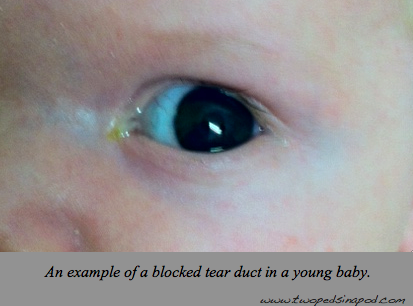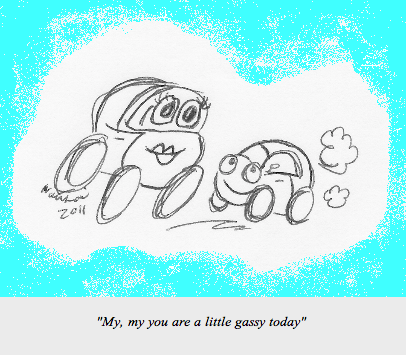 We asked Dr. Raymond Wu, the doctor behind the popular new infant iphone app babyCPR, to talk about how to perform CPR on babies under one years old. We even convinced him to time a discounted app price with the release of this post!
We asked Dr. Raymond Wu, the doctor behind the popular new infant iphone app babyCPR, to talk about how to perform CPR on babies under one years old. We even convinced him to time a discounted app price with the release of this post! If you found your baby unconscious, would you know what to do? Could you pull it off correctly while in a panic? Every moment without Cardiopulmonary Resuscitation (CPR) increases your child’s possibility of brain damage and death. Learning CPR is just one of a number of safety precautions any parent should take.
Well-performed CPR can mean the difference between a good and bad outcome, which could be the difference between life or death. In this article, we’ll go over important aspects of CPR. After reading this article, you should have a good understanding of why CPR works and how to perform it effectively. CPR is different for when it comes to performing it on a baby. So you might have been trained in giving CPR to adults, but it won’t be the same for infants.
What is CPR?
CPR stands for Cardiopulmonary Resuscitation, or more simply, “heart-lung support.” The two main components include chest compressions and rescue breaths. When the heart stops beating, chest compressions are used to maintain some blood circulation. Since the body continues to use oxygen even when breathing has stopped, we help replenish oxygen by providing rescue breaths. The idea is to help pump oxygenated blood to the body’s organs — most importantly, the brain.
Infant CPR basics
The guidelines for infants (children less than 1 year old) are to provide 30 chest compressions and alternate with 2 rescue breaths.
For each chest compression, place the baby on a hard flat surface then place two fingers in the center of the child’s chest. Quickly press down 1.5 inches, or about 1/3 of the thickness of the baby’s chest. Then release until the chest recoils, which allows the heart to refill with blood for the next compression. Do this at a rate faster than 100 compressions per minute.
To deliver rescue breaths, first attempt to open the infant’s airway by tilting their head and lifting his or her chin. After opening the airway, put your mouth over the infant’s mouth and nose, and make a good seal. For each breath, blow gently for about 1 second. A good breath will make the baby’s chest rise. Avoid blowing too hard since that can damage the baby’s small lungs.
If someone is with you, send them for help right away while you perform CPR. If you are alone with the baby, perform 2 minutes CPR before calling for help, then immediately resume CPR as soon as possible.
Infant CPR is NOT like adult CPR
Babies are not just tiny little adults. They have special needs and therefore require special care. You may have heard about hands-only CPR for adults. This does NOT apply to infants. Since they are so small, they have limited oxygen reserves in their body. You need to provide rescue breaths regularly to replenish these reserves.
Why the compression rate is now faster than 100 per minute
The previous American Heart Association (AHA) guidelines asked people to do compressions at exactly 100 per minute, but the newest 2010 guidelines now simply ask to go faster than 100 compressions a minute. Researchers found that with the previous guidelines, most people were going too slow and had overly long breaks between sets. The new guidelines encourage people to focus on improving blood circulation in the baby.
Tip: Following the beat of songs in your head like “Staying Alive” or “Mary Had a Little Lamb” can help you maintain the correct timing while you do chest compressions.
Practice makes perfect
If you learn CPR correctly and then practice correctly, you won’t lose any precious time when your baby needs saving. Practicing allows you to quickly recognize what to do and cements the skills. That way, you can remember what to do even when in a panic. Your baby’s life may depend on this.
For more information
I covered some basic aspects of infant CPR here but there are more details that are important to know, including what to do when your baby is choking. Traditional CPR classes are available in many areas and usually take about 3-4 hours. The American Red Cross provides many of these courses and The American Heart Association has a class locator on it’s
website.
Looking for other ways to learn? A new method of learning CPR is iphone app BabyCPR (
available on itunes). This app allows you to practice on a simulated baby.
Raymond Wu, MD
©2012 Two Peds in a Pod®
Dr. Wu completed medical school and internal medicine training at Northwestern University. He founded Transcension HealthCare to pursue his passion and vision for improving healthcare through the effective use of technology. He specializes in medical simulation technology and is a leader in developing computer-based medical simulators. Recently, he had the pleasure of becoming an uncle, and looks forward to creating software for his niece as she grows older
 My oldest child hated tummy time. Miserable, she would flail on the floor and wail like a marooned walrus. Although she eventually learned to tolerate it for periods of time, she disliked time on her belly so much, she skipped the developmental milestone of flipping over from her back to her belly and went straight to sitting upright.
My oldest child hated tummy time. Miserable, she would flail on the floor and wail like a marooned walrus. Although she eventually learned to tolerate it for periods of time, she disliked time on her belly so much, she skipped the developmental milestone of flipping over from her back to her belly and went straight to sitting upright.  Squeezed through the birth canal, many babies are born with pointy, cone-shaped heads. Others, delivered by caesarian section, start off life with round heads. No baby begins with a flat head. But as parents put babies on their backs to sleep in accordance with
Squeezed through the birth canal, many babies are born with pointy, cone-shaped heads. Others, delivered by caesarian section, start off life with round heads. No baby begins with a flat head. But as parents put babies on their backs to sleep in accordance with 


 Pertussis is “whooping cough,” also known as the “100 day cough.” In children and adults, the disease starts out looking like a garden-variety cold, complete with runny nose, runny eyes, and mild cough. Sometimes fever is present, sometimes not. However, after a few days, coughing spasms emerge – severe, persistent coughing spasms that go on and on and on. In between coughing fits, children may appear okay.
Pertussis is “whooping cough,” also known as the “100 day cough.” In children and adults, the disease starts out looking like a garden-variety cold, complete with runny nose, runny eyes, and mild cough. Sometimes fever is present, sometimes not. However, after a few days, coughing spasms emerge – severe, persistent coughing spasms that go on and on and on. In between coughing fits, children may appear okay. 
 I just watched “The Miracle Worker” with my oldest son. This classic 1962 movie depicts Helen Keller, who was deaf and blind, struggling to understand language, with the help and supreme patience of her determined teacher Annie Sullivan.
I just watched “The Miracle Worker” with my oldest son. This classic 1962 movie depicts Helen Keller, who was deaf and blind, struggling to understand language, with the help and supreme patience of her determined teacher Annie Sullivan. 
 Recently I’ve seen some very tired parents of newborns in my office.
Recently I’ve seen some very tired parents of newborns in my office.